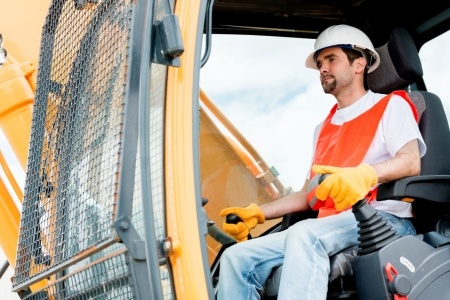 Most tall buildings built today have cranes to thank! Construction cranes allow city skylines to grow taller. If we didn’t have cranes, New York City, for instance, would look a lot different– a lot “lower to the ground,” for sure. In many ways, cranes are the backbone of the construction world.
Most tall buildings built today have cranes to thank! Construction cranes allow city skylines to grow taller. If we didn’t have cranes, New York City, for instance, would look a lot different– a lot “lower to the ground,” for sure. In many ways, cranes are the backbone of the construction world.
Advances in Construction Crane Technology
Modern cranes are a bit more advanced than the ones they used back in ancient Greece. That said, crane-like machines were probably used to erect several known architectural wonders dating back many centuries. It has been surmised that the Egyptians, for instance, probably used wooden beams attached to a rotating base and cylindrical drum along with ropes and pulleys tensed up thanks to the strength of animals pulling on them. Cathedrals of The Middle Ages were constructed using crane-like machines with jibs and the ability to pivot. Then the industrial revolution led to cranes powered by electric motors, followed by the use of steel rather than wood in crane manufacturing. Steel allowed for increased lifting capacity.
Construction cranes utilize physics and engineering to accomplish their lofty goals. Able to endure high pressures, today’s cranes do very heavy lifting while balancing their own weight simultaneously.
Cranes are typically made using high-strength low alloy steel. They consist of many parts, as you’d imagine. Essential parts include the foundation, the mast, the turntable, the operator’s cab, the jib, the trolley and hook block, counter jib and counterweights, the main winch and motors and the tower peak (aka the apex).
The Inner Workings of Lifting Cranes
To lift items, cranes perform several moves. Although strong, they can tip over, bend or break. How much a crane can lift safely and properly is directly proportional to the mast’s distance to the load. Today’s cranes usually have limit switches indicating the max load and/or load movement in order to prevent overloading.
To operate a construction crane, several systems are in place, including the sway control system, the intuitive boom operating system and the load monitor indicator. These systems help the crane operator know how a lift is going– they need to understand these systems for the job they’re doing.
Hiring the Right Crane Operator is Critical

Crane operators do more than just sit in a cab and push buttons. They also perform safety checks and make sure they’re using the correct crane for the job. For example, some jobs do well with mobile cranes or truck-mounted cranes, while others require a tower crane or rough terrain crane. Crane operators and their crews have knowledge and experience to determine what crane suits their needs.
As stated earlier, safety checks are important. What are some things that get checked before putting the crane into operation at the construction site? Oil levels, pressure gauges, fuel levels, turn signals, horns and outriggers are just some of the things that are inspected or tested.
At a construction site, crane operators want to ensure safety so they will communicate via radio and/or hand signals with other people on site.
Where Do Construction Cranes Get Their Power From?
Today’s cranes use internal combustion engines and electric motors for their power– quite different compared to the olden days when they were powered by steam, right? And today’s cranes can build themselves– you use one crane to build another crane!
Sometimes crane accidents do happen. This could be because they were set up haphazardly. Or it could be due to bad weather, dangerous conditions around the base of the crane and/or overambitious use.
A lot goes into choosing and operating a crane anywhere, including construction sites. If you’d like to know more about cranes in general and you’re thinking of renting one for your construction project in New England, please call Astro Crane at 978-429-8666.

